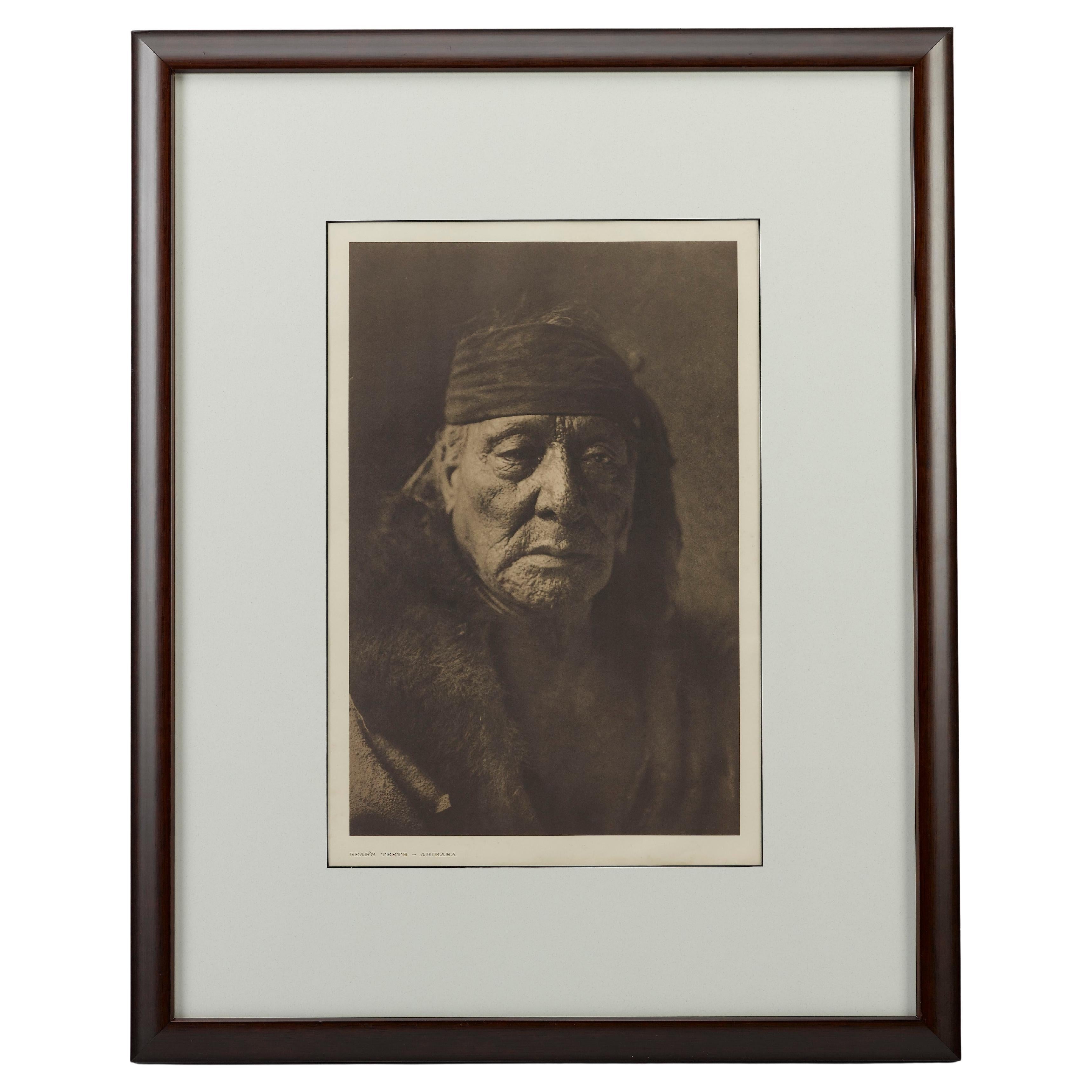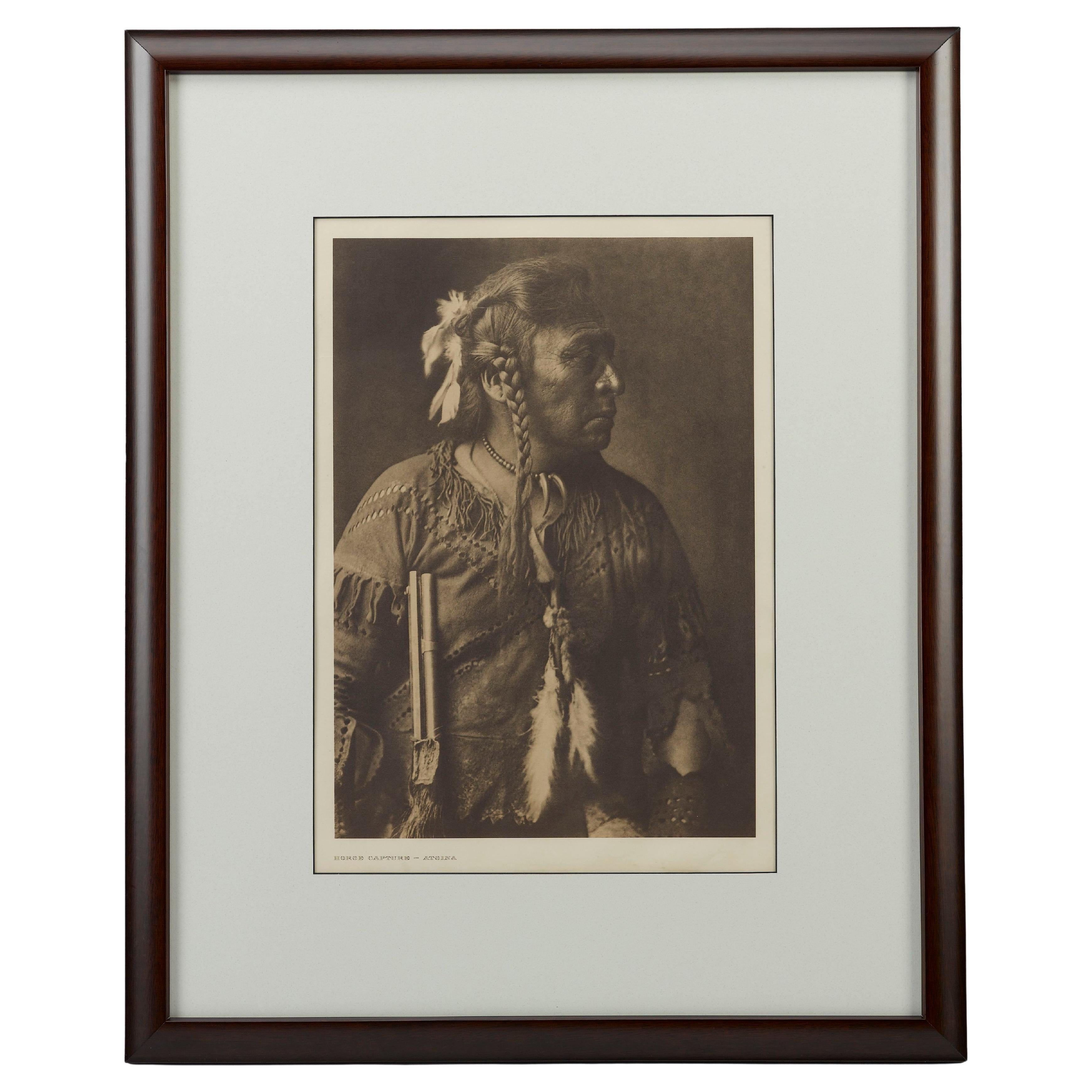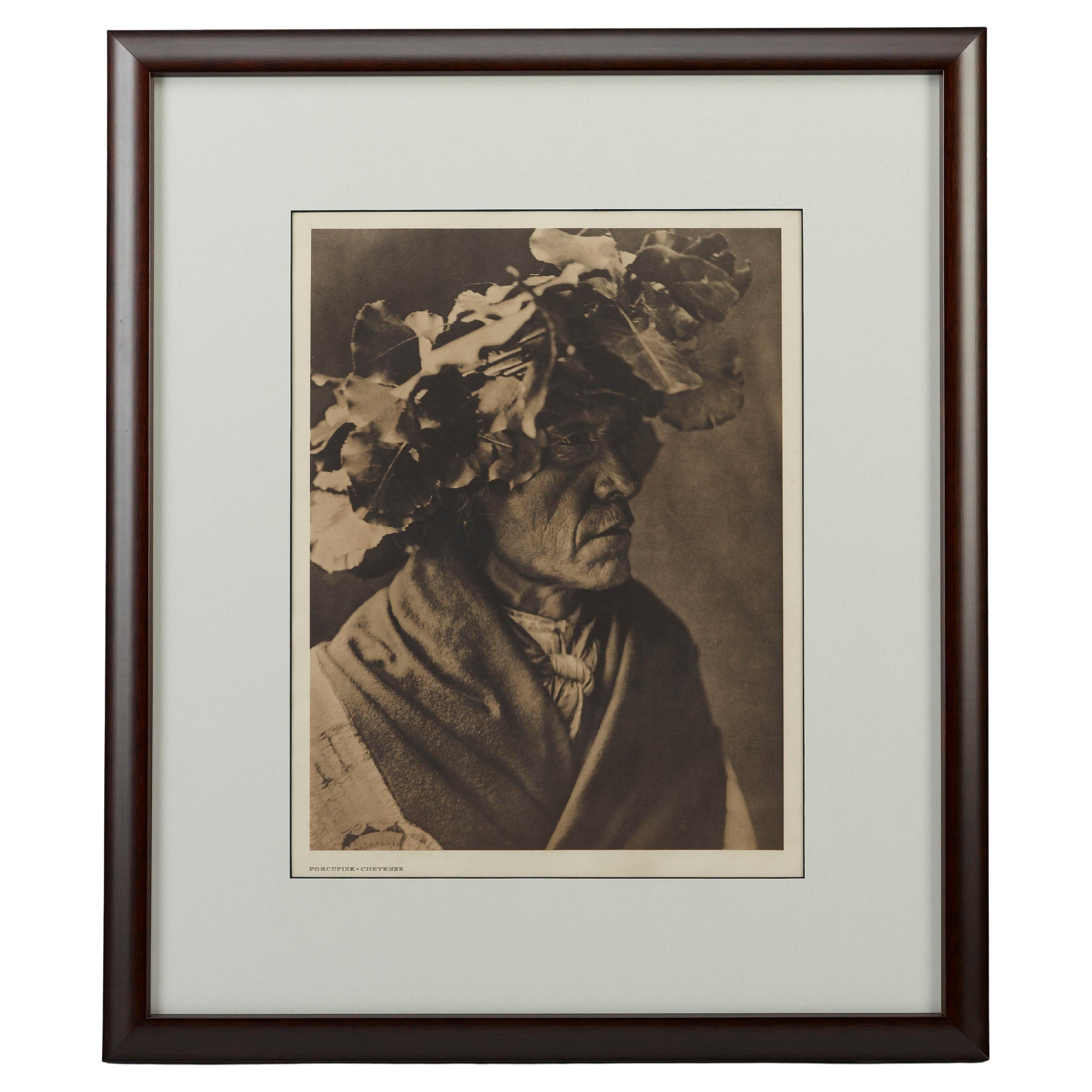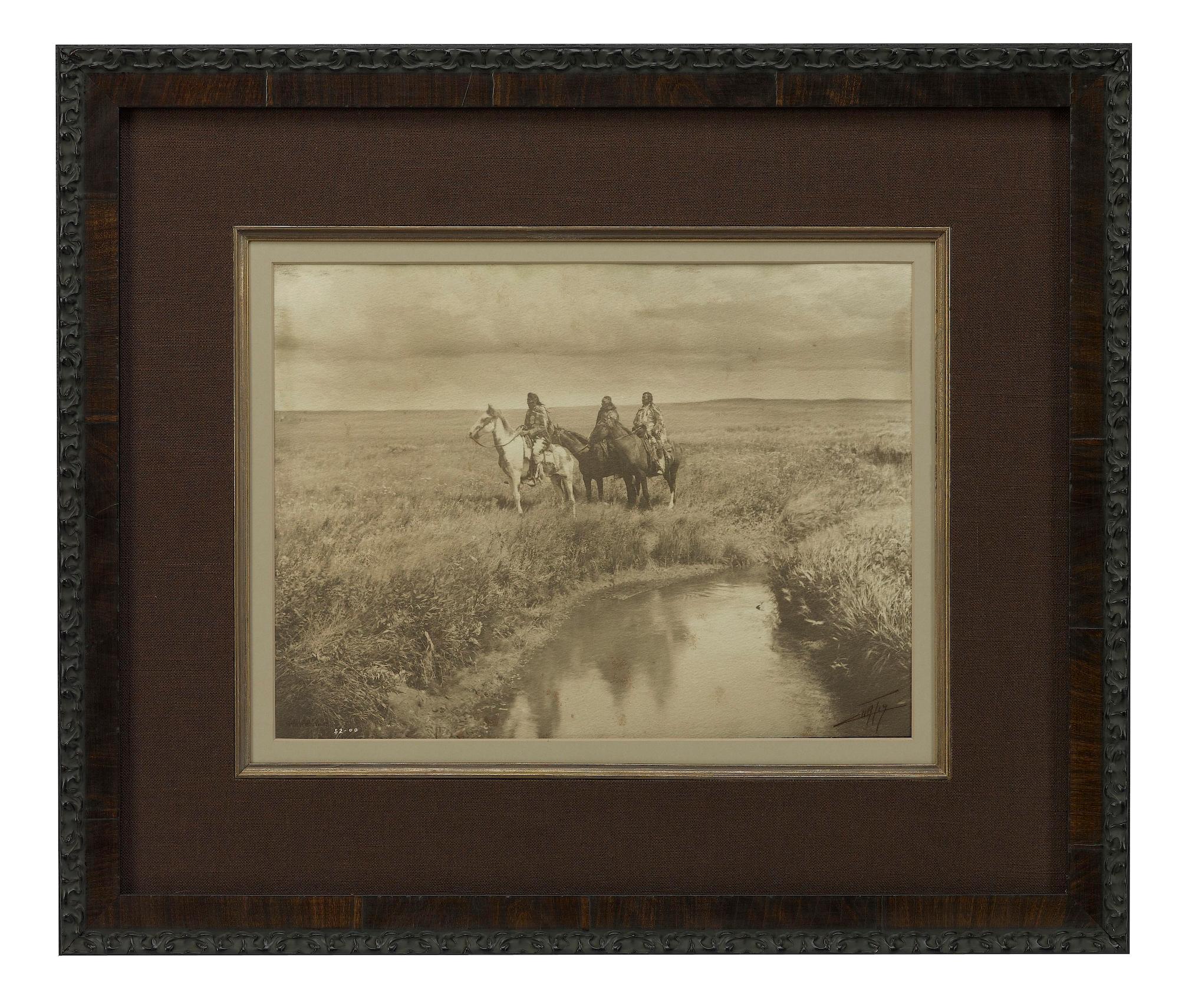"Ogalala Woman" by Edward S. Curtis, 1908
About the Item
- Creator:Edward S. Curtis, 1868-1952 (Artist)
- Dimensions:Height: 26.25 in (66.68 cm)Width: 22 in (55.88 cm)Depth: 0.57 in (1.45 cm)
- Materials and Techniques:
- Place of Origin:
- Period:1900-1909
- Date of Manufacture:1908
- Condition:Additions or alterations made to the original: Archival framing by Rio Grande Framing in Colorado Springs in November of 2022. Wear consistent with age and use.
- Seller Location:Colorado Springs, CO
- Reference Number:
Edward S. Curtis, 1868-1952
Edward S. Curtis is arguably the most influential photographer of the American West. His work unquestionably ranks among that of the most important photographers of the 20th century.
Curtis was first and foremost; an extremely gifted and sophisticated artist whose work had the duality of being an incredible artistic creation at the same time as being a document of a people. He was uniquely able to create, out of whole cloth, a lasting vision of the American Indian that never existed before it was first seen through his photographic lens.
Edward Curtis produced images of the American Indian that convey a dignity, a universal humanity and a certain remaining majesty that transcend literally all other work ever done on the subject. In his photographs we see images that are uniquely able to stand alone in the world of photography.
Beginning in 1898 and continuing through 1928, Curtis dedicated his life to documenting the traditional lifeways and cultures of 128 American Indian tribes living west of the Mississippi River, from Alaska to the Mexican border.
Curtis was a genius of an artist possessed by a singular obsession to preserve the traditional lifeways of the American Indian.
Astonishingly, focusing all his immense talents over a staggering 30-year period, Curtis accomplished what he set out to do; he did save the traditional lifeways of these Native Peoples but at tremendous personal cost. It cost him his marriage, it cost him his health, and it cost him any possible financial stability he might ever have had.
In spite of all this, he persevered and left a body of work never to be equaled in the field of photography.
Find authentic Edward S. Curtis photography on 1stDibs.
(Biography provided by Bruce Kapson Gallery)
- ShippingRetrieving quote...Ships From: Colorado Springs, CO
- Return PolicyA return for this item may be initiated within 10 days of delivery.
- "Bear's Teeth - Arikara" by Edward S. Curtis, 1908By Edward S. Curtis, 1868-1952Located in Colorado Springs, COPresented is a fine photogravure portrait of Bear’s Teeth of the Arikara tribe by Edward Curtis. The image is Plate 154 from Supplementary Portfolio 5 of Edward Curtis' epic project ...Category
Antique Early 1900s American Photography
MaterialsPaper
- "Horse Capture - Atsina" by Edward S. Curtis, 1908By Edward S. Curtis, 1868-1952Located in Colorado Springs, COPresented is a fine photogravure portrait of an Atsina man named Horse Capture by Edward Curtis. The image is Plate 170 from Supplementary Portfolio 5 of Edward Curtis' epic project ...Category
Antique Early 1900s American Photography
MaterialsPaper
- "Porcupine - Cheyenne" by Edward S. Curtis, 1911By Edward S. Curtis, 1868-1952Located in Colorado Springs, COPresented is a fine photogravure portrait of a Cheyenne man with cottonwood leave headdress by Edward Curtis. The image is Plate 216 from Supplementary Portfolio 6 of Edward Curtis' ...Category
Vintage 1910s American Photography
MaterialsPaper
- "New Chest, Piegan" by Edward S. Curtis, 1910By Edward S. Curtis, 1868-1952Located in Colorado Springs, COPresented is a fine photogravure portrait of a Piegan man named New Chest by Edward Curtis. The image is Plate 200 from Supplementary Portfolio 6 of Edward Curtis' epic project The N...Category
Vintage 1910s Photography
MaterialsPaper
- "Three Chiefs, Blackfoot, Montana" by Edward S. Curtis, Platinum Print, 1900By Edward S. Curtis, 1868-1952Located in Colorado Springs, COPresented is a rare, platinum Master Exhibition Print of Edward Curtis’ The Three Chiefs. Typical of Curtis’ Master Exhibition Prints, this platinum print is double-mounted, signed, with an embossed copyright credit and date stamp. His numeric notation “52-00” is in the photographic negative. Curtis photographed The Three Chiefs during his two weeks on a Blackfoot reservation in the summer of 1900. The photograph depicts three Piegan men in traditional dress on horseback, situated next to a small stream with an expansive cloud-filled sky behind them. The Piegans were the largest group in the Blackfoot Confederacy and still retained a majority of their original culture when Curtis visited the tribe. It reportedly took Curtis several days to find the perfect prairie backdrop and riders for this photo, yet his patience paid off. The image was pivotal in enabling Curtis to form his vision for his next project - his ambitious 20 volumes “North American Indian”publication. This print is believed to be one of only three oversized, platinum Master Exhibition Prints of this image in existence. It was printed by Curtis specifically for his East Coast exhibition tour of 1905-1906. Curtis chose only a small number of what he believed to be his finest negatives to produce prints for the show. He never again mounted an exhibition of his work, nor produced such distinctive, large-format platinum prints. “The extraordinary rarity of The Three Chiefs becomes clearer when viewed in the context of other Master Exhibition Prints, principally the 108 in the Peabody Essex Museum in Salem, Massachusetts, the largest collection in existence. The Museum, however, is missing a number of early, iconic images, including The Three Chiefs. It has long been assumed that these missing prints were held elsewhere, possibly in the collection of The New York Public Library. This theory has been substantiated by the Curtis scholar, Bruce Kapson, who unearthed a cache of letters from Curtis to J.P. Morgan and to Morgan's librarian, Ms. Bella da Costa Greene in the Pierpont Morgan Library archives in 2007. The correspondence establishes that 58 of the 100 prints in The New York Public Library's collection are actually Master Exhibition Prints, specifically selected by Curtis for J.P. Morgan as the best examples of his work. A typed letter, dated March 1907, from Ms. Greene to Curtis states: 'I enclose herewith a list of Indian photographs which you sent to Mr. J.P. Morgan'. The letter is accompanied by a handwritten list of 58 photographs, including The Three Chiefs (print number 52.) Morgan donated this group of prints to The New York Public Library in 1912.” (Christie’s Live Auction 1893 Catalog, 2007). Curtis’ platinum prints make up less than 1/2 of 1% of all of the work he created. Curtis’ platinum prints were created only for exhibition or direct sales to patrons and they were always made by Curtis himself. One significant dealer in Curtis prints...Category
Antique Early 1900s American Photography
MaterialsPaper
- Original Edward S. Curtis Photogravure, "The Klamath Hunter" 1923By Edward S. Curtis, 1868-1952Located in Colorado Springs, COPresented is a beautiful photogravure showing a Klamath man hunting from a dugout canoe. This image is Plate 458 from Volume 13 of Edward Curtis' epic project The North American Indi...Category
Vintage 1920s American Photography
MaterialsPaper
- Edward S. Curtis Original Signed Stamped Platinum Photograph Hopi Weaver, 1899By Edward S. Curtis, 1868-1952Located in Studio City, CAAn original platinum print on textured paper by iconic American photographer Edward Curtis titled "Hopi Weaver"(sometimes known as "The Weaver"). Curtis was famed for his work with the Native American peoples of the American West at the turn of the century. This image features a male Hopi elder weaving a blanket - an exclusively masculine occupation at the time. This platinum print is hand-signed in ink, blind-stamped with Curtis' embossed studio copyright stamp, and dated 1899. The negative number ("X 743") can possibly also be imperceptibly/faintly seen written by Curtis on the lower-left edge. The photo is mounted on a single, handmade lightweight paper typical of other mounted Curtis photos...Category
Antique 1890s American Native American Photography
MaterialsWood, Paper
- Edward S. Curtis Original Signed Stamped Platinum Print the Vanishing Race, 1904By Edward S. Curtis, 1868-1952Located in Studio City, CA"The Vanishing Race" is perhaps the most iconic and sought-after photographic print by renowned American artist Edward S. Curtis who was famed for h...Category
Antique Early 1900s American Native American Photography
MaterialsPaper
- Edward S. Curtis Original Signed and Stamped Silver Toned Platinum Print, 1906By Edward S. Curtis, 1868-1952Located in Studio City, CAAn original platinum print on textured paper by iconic American photographer Edward Curtis titled "The Piki Maker" The print is hand signed in ink, blind-stamped with Curtis' embos...Category
Antique Early 1900s American Native American Photography
MaterialsPaper
- Powells Garden Diptych Framed Digital Print by Edward McHughBy Edward McHughLocated in Philadelphia, PAEdward McHugh Powells Garden Diptych Framed Digital Print 66 x 100 in.Category
21st Century and Contemporary American Photography
MaterialsPaper
- My Daughter Joy, Edward G. RobinsonLocated in London, GBOriginal black and white photo of Edward G. Robinson working on location at the famous Cova Club on the Italian Riviera he borrows the Rumba band's maracas wh...Category
Vintage 1950s American Posters
- Steichen in Color Portraits, Fashion & Experiments by Edward Steichen, 1st EdLocated in valatie, NYSteichen in color: Portraits, fashion & experiments by Edward Steichen and Foreword by Joanna Steichen. Sterling Innovation September 2010. 1st Ed hardcover no dust jacket as publish...Category
2010s American Books
MaterialsPaper






